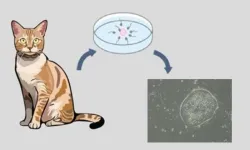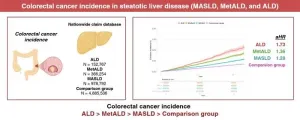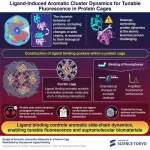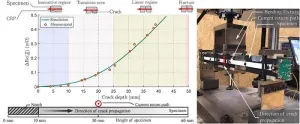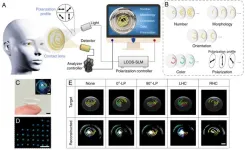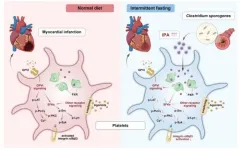(Press-News.org) A new study led by researchers at Mass General Brigham suggests a nasal spray developed to target neuroinflammation could one day be an effective treatment for traumatic brain injury (TBI). By studying the effects of the nasal anti-CD3 in a mouse model of TBI, researchers found the spray could reduce damage to the central nervous system and behavioral deficits, suggesting a potential therapeutic approach for TBI and other acute forms of brain injury. The results are published in Nature Neuroscience.
“Traumatic brain injury is a leading cause of death and disability — including cognitive decline — and chronic inflammation is one of the key reasons,” said lead author Saef Izzy, MD, FNCS, FAAN, a neurologist and head of the Immunology of Brain Injury Program at Brigham and Women’s Hospital (BWH), a founding member of the Mass General Brigham healthcare system. “Currently, there is no treatment to prevent the long-term effects of traumatic brain injury.”
The study examines the monoclonal antibody Foralumab, made by Tiziana, which has been tested in clinical trials for patients with multiple sclerosis, Alzheimer’s disease, and other conditions.
“This opens up a whole new area of research and treatment in traumatic brain injury, something that’s almost impossible to treat,” said senior author Howard Weiner, MD, co-director of the Ann Romney Center for Neurologic Diseases at BWH. “It also means this could work in intracerebral hemorrhage and other stroke patients with brain injury.”
Multiple experiments were done in mouse models with moderate-to-severe traumatic brain injury to explore the communication between regulatory cells induced by the nasal treatment and the microglial immune cells in the brain. Over time, researchers were able to identify how they modulate immune response.
“Modulating the neuroinflammatory response correlated with improved neurological outcomes, including less anxiety, cognitive decline, and improved motor skills,” Izzy said.
In addition to assessing the effects of the treatment, the research team was able to learn about immune response over time and compare the immune responses and effects of TBI in the mice.
The next step in the research is to translate the findings from preclinical models to human patients.
“Our patients with traumatic brain injury still don’t have an effective therapeutic to improve their outcomes, so this is a very promising and exciting time to move forward with something that’s backed up with solid science and get it to patients’ bedsides,” said Izzy.
Once in the clinical setting, Weiner said the hope is this treatment could be used on a variety of traumatic brain injury patients, including football players with repetitive concussions.
“We envision giving a nasal spray right there on the sidelines,” said Weiner. “It isn’t something we can do yet, but we see the potential.”
Authorship: In addition to Izzy and Weiner, authors include Taha Yahya, Omar Albastaki, Hadi Abou-El-Hassan, Michael Aronchik, Tian Cao, Marilia Garcia De Oliveira, Kuan-Jung Lu, Thais G. Moreira, Patrick da Silva, Masen L. Boucher, Leah C. Beauchamp, Danielle S. LeServe, Wesley Noguiera Brandao, Ana Carolina Durao, Toby Laser, Federico Montini, Joon-Hyuk Lee, Joshua D. Bernstock, Megha Kaul, Gabriel Pasquarelli-do-Nascimento, Kusha Chopra, Rajesh Krishnan, Rebekah Mannix, Rafael M Rezende, Francisco J. Quintana, and Oleg Butovksy.
Disclosures: Weiner is on the scientific advisory board of Tiziana Life Sciences.
Funding: Izzy reports grants from the National Institute of Neurological Disorders and Stroke (grant no. 5K08NS123503-03), Department of Defense (grant no. HT9425-24-1-0635), 2021 Neurocritical Care Society Research grant and 2023 Stepping Strong Innovator Awards. Izzy and Weiner report a grant from the Department of Defense Multidisciplinary University Research Initiatives Program (grant no. W911NF-23-1-0276). We thank the NeuroTechnology Studio at Brigham and Women’s Hospital for providing instrument (Leica DMi8 Widefield Fluorescence Microscope and Zeiss LSM710 Confocal) access and consultation on data acquisition and data analysis. A Brigham Research Institute Pilot imaging microgrant was received.
Paper cited: Izzy, S., et al. “Nasal anti-CD3 monoclonal antibody ameliorates traumatic brain injury, enhances microglial phagocytosis and reduces neuroinflammation via IL-10-dependent Treg–microglia crosstalk” Nature Neuroscience. DOI: 10.1038/s41593-025-01877-7
Related Information:
Foralumab Nasal Spray May Offer New Hope for MS Treatment | Mass General Brigham
###
About Mass General Brigham
Mass General Brigham is an integrated academic health care system, uniting great minds to solve the hardest problems in medicine for our communities and the world. Mass General Brigham connects a full continuum of care across a system of academic medical centers, community and specialty hospitals, a health insurance plan, physician networks, community health centers, home care, and long-term care services. Mass General Brigham is a nonprofit organization committed to patient care, research, teaching, and service to the community. In addition, Mass General Brigham is one of the nation’s leading biomedical research organizations with several Harvard Medical School teaching hospitals. For more information, please visit massgeneralbrigham.org.
END
Covid-19 showed us how vulnerable the world is to pandemics – but what if the next pandemic were somehow engineered? How would the world respond – and could we stop it happening in the first place?
These are some of the questions being addressed by a new initiative launched today at the University of Cambridge, which seeks to address the urgent challenge of managing the risks of future engineered pandemics.
The Engineered Pandemics Risk Management Programme aims to understand the social and biological factors that might drive an engineered pandemic and to make a major contribution ...
The researchers challenge the widespread belief that AI-induced bias is a technical flaw, arguing instead AI is deeply influenced by societal power dynamics. It learns from historical data shaped by human biases ,absorbing and perpetuating discrimination in the process. This means that, rather than creating inequality, AI reproduces and reinforces it.
“Our study highlights real-world examples where AI has reinforced existing biases.” Prof. Bircan says. “One striking case is Amazon’s AI-driven hiring tool, which was found to favor male candidates, ultimately reinforcing gender disparities in the job market. Similarly, government AI fraud detection ...
The following is a Q&A with Dr Nerea Casal García, a sports scientist focusing on sports training and performance optimization. To speak to the author, or to receive an advance copy of the paper, please write to: press@frontiersin.org The paper will be published on 27 Feb 2025 06:15 CET]
Dr Nerea Casal García is an athlete, personal coach, and injury readaptation specialist who last year completed a PhD on observational analysis in elite sports. Today, she is a professor at the Institut Nacional ...
As different as they may seem, humans and cats have similar ailments, but in terms of health care, veterinary regenerative medicine is not as advanced.
A possible solution rests in embryonic stem cells, which can differentiate into various types of cells and be transplanted to restore internal damage. Further, they are characterized by their near-natural state similar to induced pluripotent stem (iPS) cells. Recent research has successfully generated feline iPS cells, but not embryonic stem cells, so research on these cell lines is essential to improve the quality ...
Alcoholic and non-alcoholic fatty liver disease (NAFLD) are well-known risk factors for colorectal cancer (CRC). NAFLD has emerged as a heterogenous disease tightly linked to metabolic dysfunction and has been redefined under the umbrella term ‘steatotic liver disease’ (SLD). However, CRC risk variations across different SLD subgroups remain unknown. Now, researchers from Japan have discovered that the risk of CRC varies significantly among SLD subgroups, with patients with alcoholic liver disease being at higher risk.
Lifestyle-related disorders have become increasingly prevalent, representing a major health ...
Novel protein cage system can control and visualize orientational changes in aromatic side chains upon ligand binding, as reported by researchers at Institute of Science Tokyo. By inducing coordinated molecular changes, this approach enables precise control over protein dynamics while also enhancing fluorescence properties. Their breakthrough could lead to applications in biomolecular robotics, drug delivery, and advancing the development of responsive biomaterials.
The dynamic nature of proteins—their ability to bend, fold, and change shape in response to their environment—underlies ...
In our paper “Experimental and Numerical Analysis of the Potential Drop Method for Defects Caused by Dynamic Loads”, we investigate how the electrodynamic proximity effect can be utilized to enhance the defect sensitivity of PDM in SHM applications by proper arrangement of the measurement setup. We showed how eddy current effects present in our PDM setup can be modeled analytically and numerically. Lock-in technique and the application of the skin effect allow high- resolution impedance ...
Chiral-structural-color materials produce color through microscopic structures that interact with light rather than through pigmentation or dyes. Some beetle exoskeletons, avian feathers, butterfly wings, and marine organisms feature these structures naturally, producing iridescent or polarization-dependent colors. Over the last 10–15 years, scientists have made progress in developing artificial chiral-structural-color materials.
Recently, Chinese researchers have made a breakthrough in the field by discovering that microdomes made from common polymers exhibit tunable chiral structural colors with broad-spectrum capabilities and multiple ...
Cardiovascular diseases remain a leading cause of death worldwide, with platelet hyperactivity and subsequent thrombosis playing a pivotal role in these conditions. While intermittent fasting has long been recognized for its metabolic benefits, including improvements in metabolic diseases, weight loss, and even lifespan extension, its effect on platelet activation and thrombosis formation remains less understood.
A recent study by Professor Junbo Ge team at Fudan University unveiled a novel mechanism by which intermittent fasting can significantly reduce the risk of platelet hyperactivity and thrombosis. That is, intermittent fasting elevates levels of the metabolite ...
Curtin University researchers have developed a new technique to make glass water-repellent, a feature that could improve safety in vehicles, reduce cleaning costs for buildings and enhance filtration systems.
The research, published in the prestigious journal Advanced Functional Materials, shows how an innovative and non-toxic process using ultrasonic sound waves can alter the surface of glass, making it either hydrophobic (water resistant) or electrically charged.
Lead researcher Associate Professor Nadim Darwish, an ARC Future Fellow at Curtin’s ...

